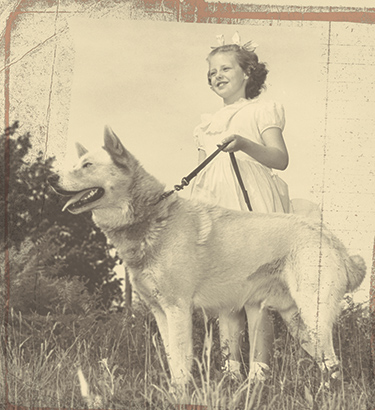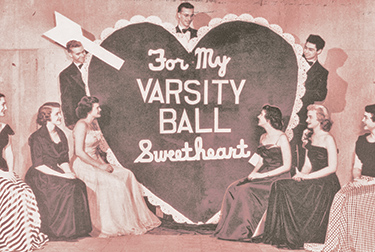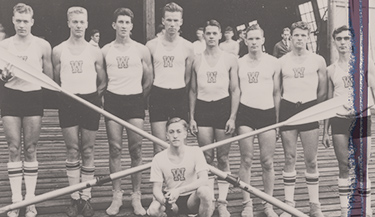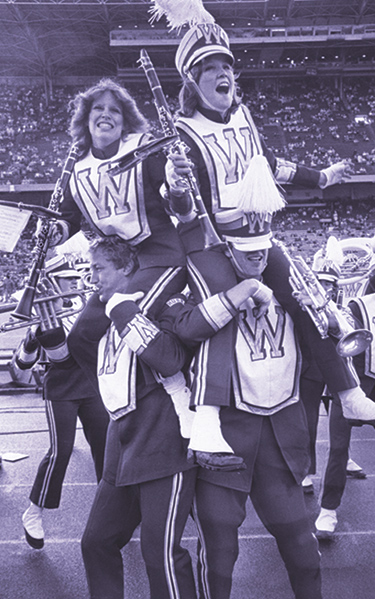With its natural beauty and isolated location tucked away in this corner of the country, the state of Washington is a special place. Its residents feel a deep-seated connection to the environment; are imbued with compassion for their fellow man; and are infused with an entrepreneurial yet collaborative spirit. Thus, it’s no surprise that some of the country’s leading and most innovative companies—Microsoft, Amazon.com, Costco, Boeing, Alaska Airlines, Nordstrom—sprang to life here. Or that some of the nation’s leading equal-rights movements grew up here.
Or that this is the home to the University of Washington, which is celebrating its 150th anniversary this fall.
While the Civil War was breaking out 2,400 miles away, the Territorial University of Washington rose from 10 acres in a tiny village called Seattle in 1861. The campus’ founders wanted to create a place to educate the area’s young students.
 But the fruits of their labor blossomed into much more than that. Today, the UW is as much a part of our daily life as going to the yearly Nordstrom sale or taking Metro to Seattle Center to catch Bumbershoot.
But the fruits of their labor blossomed into much more than that. Today, the UW is as much a part of our daily life as going to the yearly Nordstrom sale or taking Metro to Seattle Center to catch Bumbershoot.
Of course, the UW continues to produce the best thinkers in a wide range of fields, from medicine to poetry, from computer science to painting.
But stop and think of Saturdays in the fall. What comes to mind? Putting on your purple, grabbing your seat cushion and heading down to Husky Stadium with family, friends and co-workers to watch Husky football. Rain or shine, Rose Bowls or losing seasons, Husky football is simply part of life here. Says Tom Symons, ’53, a local businessman who has been coming to Husky football games since John F. Kennedy was president 50 years ago: “It’s what we live for.”
 Or fast forward to the first weekend in May, for the opening day of boating season. This decades-long Seattle tradition means packing up the kids, filling thermoses with hot chocolate and setting out folding chairs along Montlake Cut to watch a spectacle highlighted by races featuring our world-beating Husky men’s and women’s crew.
Or fast forward to the first weekend in May, for the opening day of boating season. This decades-long Seattle tradition means packing up the kids, filling thermoses with hot chocolate and setting out folding chairs along Montlake Cut to watch a spectacle highlighted by races featuring our world-beating Husky men’s and women’s crew.
But Husky pride isn’t just about sports. It’s driving to QFC to pick up a gallon of milk and recalling, oh yeah, there’s the building where kidney dialysis was perfected; or walking down to the Ave to buy a gift at University Book Store and seeing the newspaper headline saying, again, that the UW turns out more Peace Corps volunteers than any other school in the country.
It’s knowing that this is the place so many Washington kids automatically think of for college, because their families have done that forever. And even though it has a reputation as one of the world’s premier institutions of higher education, to us it just feels like a neighbor because it’s in our backyard.
 It also feels so familiar because so many of us graduates still live in state; in fact, nearly 70 percent of the 300,000 alumni reside within an hour of the campus where they did their first research project, learned to love history, made best friends in the sorority, started on their career path, maybe even met their spouse. At most campuses, alumni scatter all across the map.
It also feels so familiar because so many of us graduates still live in state; in fact, nearly 70 percent of the 300,000 alumni reside within an hour of the campus where they did their first research project, learned to love history, made best friends in the sorority, started on their career path, maybe even met their spouse. At most campuses, alumni scatter all across the map.
So the UW really is our university.
We’re on a first-name basis with it, calling it by its lovable contraction, U-Dub, because it is so familiar to us. And it feels good to know that we have shared classrooms with folks who went on to do heroic things, like wipe out smallpox (William Foege, ’61), help design the Space Shuttle’s ceramic tiles (Bonnie Dunbar, ’71, ’75) and write the best children’s books known to man (Beverly Cleary, ’39).
 We also ate pizza in the HUB with regular alums who aren’t famous but worked hard, raised their families and made a difference by doing things like sprouting the farmers market movement in Seattle (Chris Curtis, ’73), creating programs treating the homeless, addicted and mentally ill (Gregory Alex, ’71) and starting an international relief agency in their garage to help poor kids around the world (Christine Umayam, ’99).
We also ate pizza in the HUB with regular alums who aren’t famous but worked hard, raised their families and made a difference by doing things like sprouting the farmers market movement in Seattle (Chris Curtis, ’73), creating programs treating the homeless, addicted and mentally ill (Gregory Alex, ’71) and starting an international relief agency in their garage to help poor kids around the world (Christine Umayam, ’99).
Just as Husky pride is everywhere, so is the UW. And by “UW,” we don’t just mean what happens in the stadiums and classrooms on the Seattle campus. It’s what’s going on in the renovated brick buildings of UW Tacoma in that city’s reborn downtown or in UW Bothell’s new place overlooking its wild and wonderful wetlands. It’s what happens in UW Medical Center, Harborview Medical Center and the other hospitals and neighborhood clinics in Washington, where UW Medicine can keep us healthy with everything from a heart-lung transplant to a flu shot.
The fact is, so much of our lives are affected by the UW, and we might not even know it. Everyone who has ever chewed bubble gum or had kidney dialysis or watched color TV has been touched by the place in our backyard where discovery, collaboration and taking new approaches to solving the vexing problems facing mankind happen every day, by Nobel Prize winners who ride the bus to work and children of migrant farm workers who are the first in their family to go to college dreaming of becoming astronauts.
If you head to the beach and pick up a novel by Ivan Doig, ’69, or Marilynne Robinson, ’68, ’77, or a tell-all biography by Kitty Kelley, ’64, you are being delighted and entertained by a UW grad. Going to a museum to see a Chuck Close, ’62, painting or stopping in the Art Wolfe, ’75, Gallery at REI? Again, UW grads are tantalizing the right side of your brain.
This fall, as the UW turns 150 years old, we take a moment to reflect and celebrate the accomplishments and existence of our neighbor that has meant so much to us—even if we never realized it before.
Happy Birthday, U-Dub.